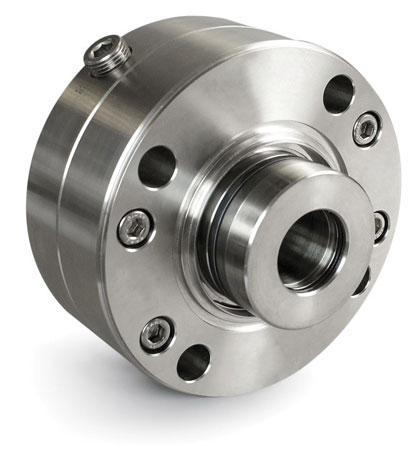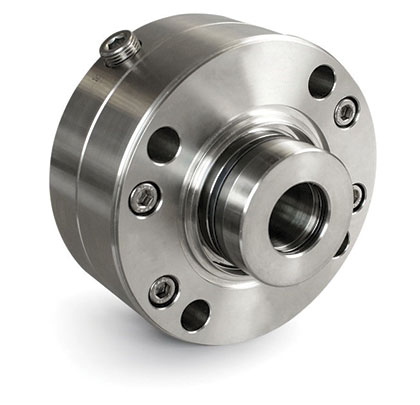The intent of this article is to document better and more effective ways to select one of the primary components of process pumps—mechanical seals. It discourages buying from the lowest bidder; instead, it points to the merits of favoring solid field experience in terms of product quality and customer service. While this is rather universal advice for safety-critical parts, it is also a fitting reminder that mechanical seals should rank high on our review list.
BOCS AND HOW THEY WORK WITH COOPERATIVE SUPPLIERS
Best Practices, or “Best-of-Class” (BoC), process pump user companies have, over the past few decades, implemented mutually rewarding buyer-user working relationships (for reference, see Bloch, Heinz P. “Petrochemical Machinery Insights,” (2017), Elsevier Inc., Oxford, UK, and Cambridge, MA, ISBN 978-0-12-809272-9). These relationships are highly appropriate for mechanical seals–the one component of process pumps that tends to fail more frequently than other pump parts. BoCs team up with innovators for the purpose of optimizing seal selection. They realize that pump life extension is interwoven with component reliability enhancements.
Today’s BoCs focus on work processes and selection strategies that differ from the customary norms of doing business. We see a clear trend for truly reliability-focused buyers and user-purchasers to place more than the usual emphasis on vendor innovation, product quality, and service. Although these highly important performance attributes are not as easy to quantify as price and schedule, smart users and leading suppliers are taking steps to deliberately and thoughtfully quantifying these values. Experience shows that vendor innovation can save power costs and reduce maintenance expenditures, as can product quality and service.
In other words, it should be noted that the monetary value of product quality and service can be estimated by field-wise reliability professionals. During the seal selection process, experienced staffers will also weigh the ultimate cost savings of using the most advantageous seal flush piping layout. Even the imputed value of making a competent seal vendor the BoC’s training resource enters into a good procurement decision. In looking at an all-encompassing value proposition, the thought leaders and wholly reliability-focused professionals at BoCs maximize the contributions of both seller and purchaser. In a truly cooperative relationship, each entity uses their own (and their company’s) time to mutual best advantage.

Featured Image: Figure 1: A cartridge-style dual mechanical seal (source: AESSEAL, Type “CAPI A”).
Above: Figure 2: A cartridge-style single mechanical seal (source: AESSEAL, Type “CAPI A”).
IMPROVING MACHINERY RELIABILITY
As we examine how reliability professionals at BoCs contribute to selecting optimized seals, we are usually struck by their deliberate and financially sound approach. We find that BoCs are proactive and equip their mid-level managers with a well-designed and thoroughly cost-justified implementation roadmap. On existing installations, they give priority to upgrading equipment (pumps) that presently fail twice or three times more often than the average pump. On these high priority fluid movers, the answers to three questions are being sought:
- Is an upgrade possible?
- If yes, is an upgrade cost-effective?
- Which innovative technology provider should be selected to implement the combined repair and upgrade?
Mechanical seal upgrading on existing pumps starts with disclosing fluid parameters and with the definition of seal types. By way of an example, suppose we needed a seal for a deisobutanizer bottoms pump on the alkylation unit of our refinery. Pumps in an alkylation unit will have the seal exposed to hydrofluoric acid, which calls for the seal to be supplied in Alloy 400 (Monel) metallurgy throughout. Perfluoroelastomers (Kalrez®) should be used for secondary sealing. Of course, the risk of exposure to HF on site will be reduced by closely adhering to specific safety measures. Reducing the need for maintenance means reducing the risk of personnel exposure. Accordingly, seal reliability on these units will be of importance to the organization.
GOING BEYOND THE CUSTOMARY TABULATION
We recently wanted to understand what made a proposed deisobutanizer bottoms seal more reliable and asked the vendor-manufacturer to disclose certain design details. Before purchasing a critically important seals for the HF process unit, we recommended reviewing a very detailed listing referring to mechanical seals (see figures 1 and 2) that have been operating in such services for five or more years.
In the example at issue, the seal manufacturer went far beyond the customary tabulation of seal user location, service, temperature, pressure, size, shaft speed, rpm, face materials, deformable (elastomeric) sealing materials, pump manufacturer, and installation date.
A LOOK AHEAD
In all, there were thirty-nine columns on this manufacturer’s spread sheet—highly important, regrettably too large to represent in this article. We also noted that the seal manufacturer distinguished himself by using far more stringent leak testing procedures than his competition and was very willing to commit to on-site teaching and explaining. In parts 2 and 3 of this series, we will show how one does not need to be an expert in mechanical seals to find the right seals for the application.
About The Author
Heinz P. Bloch is a consulting engineer with locations in Westminster/Colorado and Houston/ Texas. He can now draw on sixty-seven years of applicable industry experience which commenced with absolving an apprenticeship in his home town in Germany. After obtaining BSME and MSME degrees in Mechanical Engineering, he held machinery-oriented staff and line positions with only two employers—first with Johnson and Johnson and then with Exxon affiliates in locations around the world, on all six continents. He is the author of twenty full-length books and close to 700 technical publications. These and many other relevant observations are detailed in his 784-page text “Petrochemical Machinery Insights,” (copyright 2017, published by Elsevier Inc., Oxford, UK, and Cambridge, MA, ISBN 978-0-12-809272-9).
____________________________________________
MODERN PUMPING TODAY, April 2017
Did you enjoy this article?
Subscribe to the FREE Digital Edition of Modern Pumping Today Magazine!



